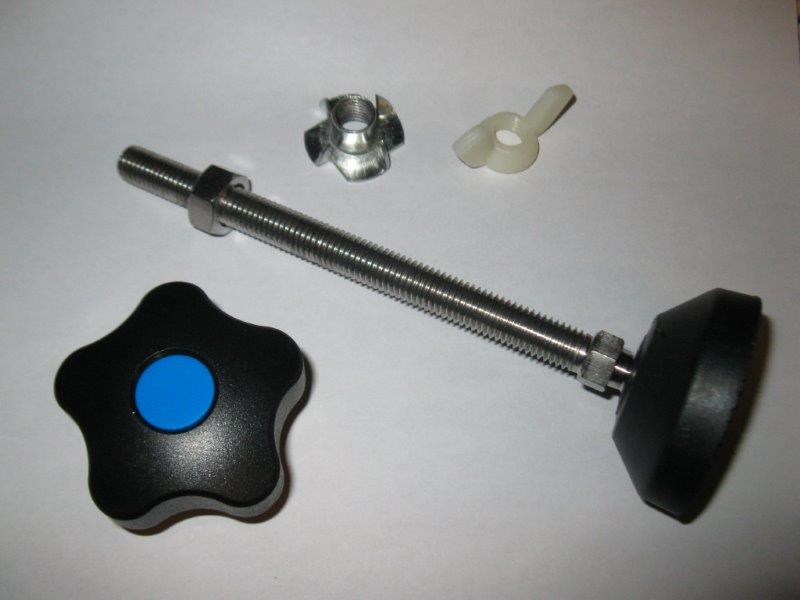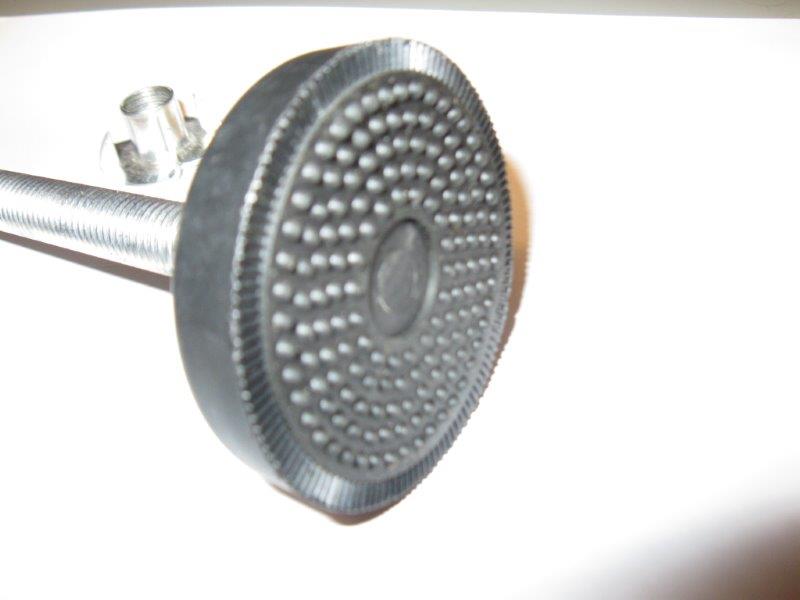Adjustment feet for levelling and latitude range

The SkyStopper is adjustable for a range of latitudes.
There are 3 adjustable legs on the skystopper. Each leg has a stainless steel M12 shaft, in a steel tee nut under the base. The feet swivel and have non-skid bumps on them.

A large wing nut allows you to snug the shaft to the base to eliminate play.
The 5 lobed handle serves two purposes. It's adjustable to allow you to take up some of the 6 inch shaft, should you want the handle to have a lower profile.
The feet on the SkyStopper form a triangle. The apex foot is adjustable through 60 turns: each turn is 1.75 mm of adjustment.
Based on the distance between the apex foot and the line of the other 2 feet, a turn of the handle results in an incline of the platform equal to a certain distance north or south on the earths surface.
10000 km to the pole, in 90 degrees, means that there's 111.1 km per degree. Turning the screw one turn compensates for a latitude change of 0.128 degrees, or 14.7 km. (about 9 miles).
The leveling feet allow for easy travel with your SkyStopper. The gimbal of the bubble level should be adjusted for your preferred observing location. There, you just put the skystopper on the ground and level it.
THe level is very sensitive, and it's easy to see the effect of a half-turn of a handle. So just looking at the level will get the altitude setting of the SkyStopper within about 3 arc minutes of the proper altitude for the north celestial pole.
If you travel, put the skystopper on the ground and level it according to the bubble level, then turn the apex knob a computed number of turns to compensate for the change in latitude.
It has to be mentioned that if you go too far, the telescope can become unstable.
The SkyStopper is able to adjust for about 6 degrees of north or south adjustment. It adjusts for travel south more stably than north, because of the way the telescope sits on it. The telescope is most stable of the triangle of its feet has 2 feet on the low side. That's because the center of gravity of the telescope must be kept above the triangle formed by the feet. It has to be witnin the line connecting the apex foot to one of the other feet.
When the telescope tilts south to accommodate northward travel, the center of gravity moves closer to the apex foot, and has less lateral motion before it reaches the line of the feet.
Naturally, your telescope will be most stable if the feet are spread out the maximum distance from the center. The measurements spreadsheet for making the SkyStopper's parts takes into accont a latitude range and stability margin. Those numbers can impact the tracking time if they are too large.